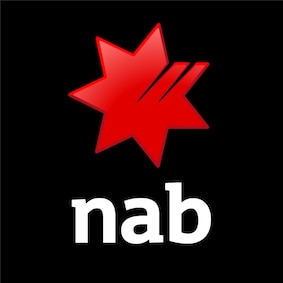Helpful tips on how to improve your credit score - NAB
What is creditworthiness?
Creditworthiness refers to a person or company considered suitable to receive credit – mainly due to being reliable in paying money back in the past, as well as having enough funds to stay afloat if things go south. Being creditworthy can:
It’s important to understand the basics of creditworthiness before you look to grow your credit score.
What is a credit score?
Your credit score, also known as your credit rating, is a number that represents your creditworthiness. This shows a lender your history of credit use and if you’re able to manage your debts effectively.
A credit score is calculated and reported by various credit reporting bodies like Equifax, illion, or Experian Australia.
So, what is considered a ‘good’ credit score? Different reporting bodies have varied ranges, so it’s best to look at their websites to get an understanding of where you stand.
Your credit report
Information in your credit report
- Personal information like your full name, date of birth, gender, recent addresses, employer information and driver’s licence number.
- Details from public records, such as court judgments about unpaid credit and whether you’ve filed for bankruptcy.
- Information about any loan enquiries you or someone acting on your behalf has made in the last five years, details of any debt you have, any defaults and debts overdue by 60 days or more, and if an account is under an agreed financial hardship arrangement.
Visit Credit Smart to learn more about the information in your credit report.
Checking your credit report
You can get a copy of your credit report and check your credit score through one of the credit reporting bodies. You’re entitled to a free copy every 12 months, so it’s a good idea to check your credit report yearly to make sure it’s correct.
Sometimes people notice errors in their credit report. This may be due to a mistake by credit providers or the credit reporting agency, or could indicate identity theft. If there’s a mistake on your report, the government’s MoneySmart website offers help on reporting errors.
Best ways to improve your credit score
Here are our top tips for improving your credit score and creditworthiness. Learn more about creditworthiness and why it matters.
The best ways to improve your credit score
Want to boost your credit score? Here are some straightforward steps to take:
Check your credit score
You’re entitled to a free copy of your credit report every 12 months. Learn more about how to access your credit report.
Pay bills and rent on time
It’s important to pay bills like your phone, electricity and rent on time. Repeatedly missing repayments can have a negative impact on your credit score. Missed payments may lead to referral to a debt collector or to a default being recorded on your credit report.
Pay loans and credit cards on time
Regularly paying off at least the minimum amount on credit cards, personal and home loans shows that you’re in control of your debt. If you’re able to pay off more than the minimum, this helps reduce monthly interest charges. Remember, you can avoid credit card interest by paying off the full amount by the due date.
Limit your credit applications
Each new credit application is added to your file and temporarily lowers your score. Multiple credit applications within a short time can be seen as a risk and impact your creditworthiness. Do your research and make sure a credit product is right for your personal circumstances before you apply.
Build up your savings
If you have money regularly coming in, maintaining an emergency fund will give you reassurance that you’ll still to be able to pay bills on time if something unexpected happens. This is also a great way to demonstrate you’re a good credit risk when applying for a credit card, personal loan or home loan.
What to do during hard times?
If you’re going through a difficult time financially, it’s important to try and keep on top of expenses as best you can. Missing loan or credit card repayments may impact your credit score, so the best way to avoid this is to take action early on. By setting up a financial hardship arrangement with your existing lenders and banks, you can ensure your credit score remains healthy, so when things are better for you and your finances, you can pick up where you left off.
Learn about our financial hardship assistance.
Here are some other tips to help you stay on top of your money:
- Schedule regular repayments so bills are paid automatically.
- Get advice on credit card and personal loan repayments and managing your home loan.
- Read our advice to help you save more money, and track your savings goals in the NAB app.
Explore other life moments
Why you should avoid exceeding your credit card limit
Find out what happens if you go over your credit card limit.
What is overdraw and how to avoid it?
Our article explains what happens if you overdraw your NAB personal transaction or savings account and offers simple tips to avoid it in the future.
How to budget
Create a budget to help you meet your money goals.
Related products and services
Personal loan for debt consolidation
Multiple debts can be difficult. Put it all in one place and get a helping hand with a NAB Personal Loan for debt consolidation.
Credit cards
Compare between our credit cards to find the right one for you.
Home loans
Home loans for every need with tools, calculators and guides to help you choose.
Choose between a personal loan or credit card
Read our tips to help you decide if a credit card or personal loan is the right option for you.
Get in touch
Customer Support Tool
Solve problems quickly online with our easy-to-follow guides. Simply select a topic and we’ll direct you to the information you need.
Contact us
Explore our personal banking contact information and get support with a wide range of products, services and topics.
Visit a NAB branch
Visit us in person at your nearest NAB branch or business banking centre.
Terms and Conditions
Apologies but the Important Information section you are trying to view is not displaying properly at the moment. Please refresh the page or try again later.
The information contained in this article is intended to be of a general nature only. It has been prepared without taking into account any person’s objectives, financial situation or needs. Before acting on this information, NAB recommends that you consider whether it is appropriate for your circumstances. NAB recommends that you seek independent legal, financial and taxation advice before acting on any information in this article.
BPAY® is registered to BPAY Pty Ltd ABN 69 079 137 518.





